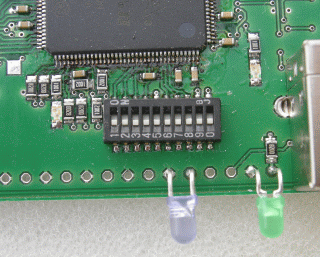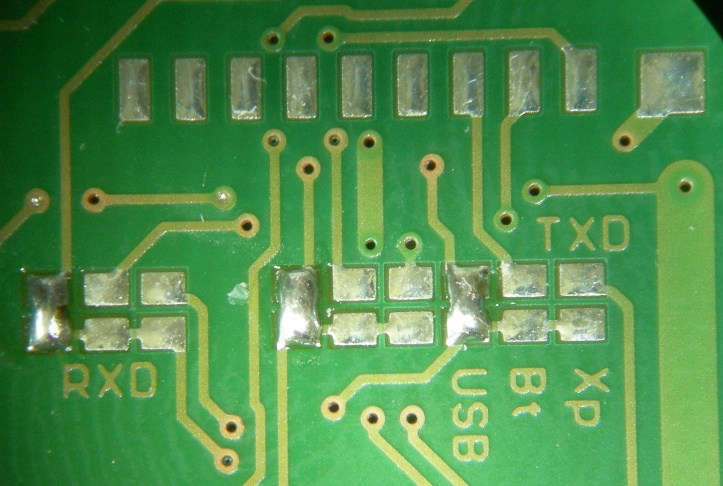At minimum one solder jumper is always needed at the TX-Data multiplexer: In most cases it is the solder jumper named USB, which connects the serial output of the FPGA to the USB interface. The other possible selections are Xport and BlueTooth. Multiple connections are possible for TX-Data.
RX-Data currently is not used.RTS-Handshake Signal is only used if you observe loss of data due to a large number of frames or due to a slow PC. It is explained later. It must only be connected to one of the output devices
The default or fallback position of the DIP switches is all off, means towards the LED: 1MBit/sec over USB, no special funtion activated.In case of any problems with the Mode-S Beast, I always suggest falling back to this setting.

The 10 DIP switches on the component side of the PCB
